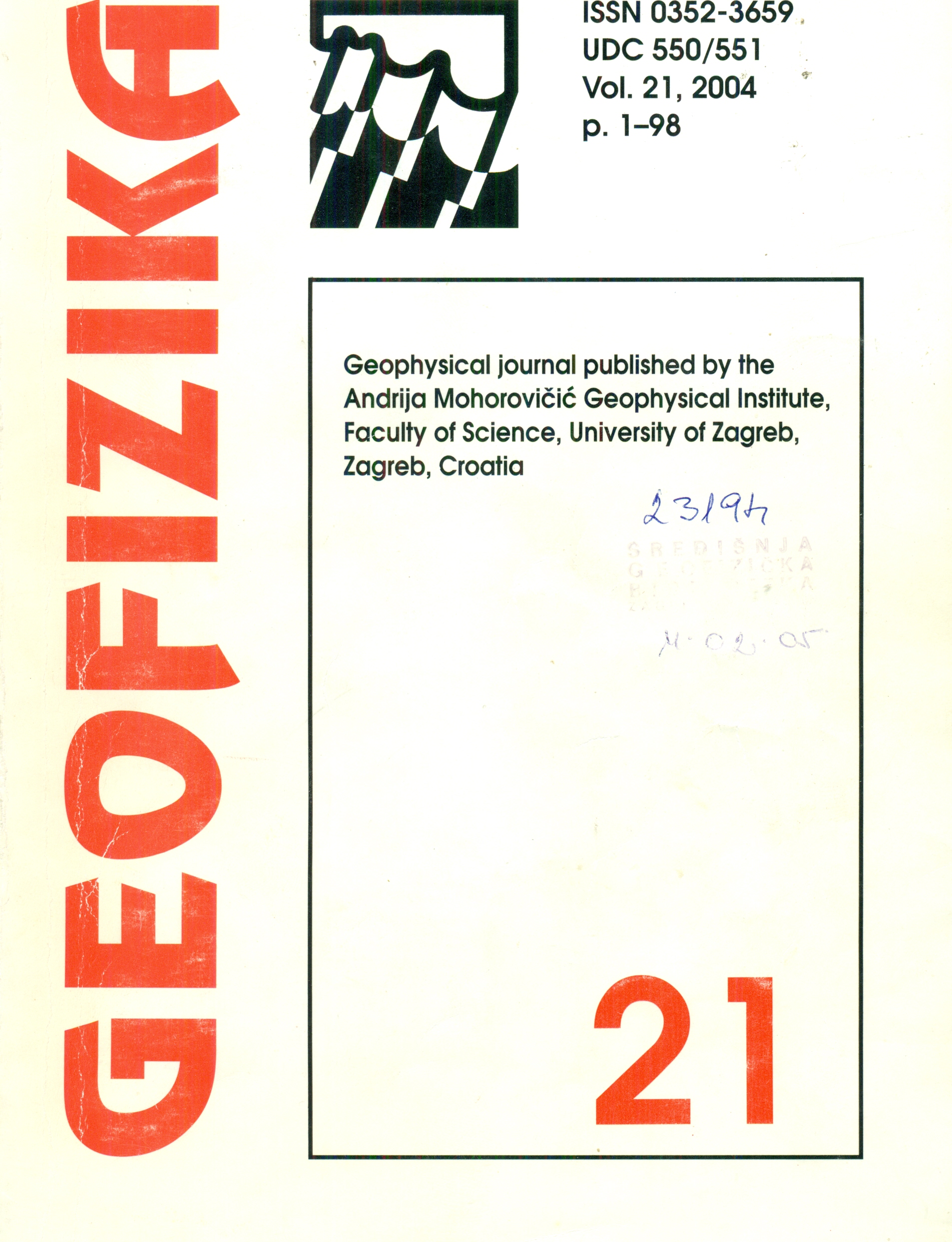Results of the preliminary geomagnetic field strength measurements in the northern part of middle Croatia
Keywords:
Geomagnetic field, total field strength, secular variation, northern middle CroatiaAbstract
In autumn 2003 we made a survey of total magnetic field strength in a part of Croatia from river Drava north to river Sava and Pokuplje, between the lines Zagreb – Koprivnica on west, and Hrvatska Kostajnica – Virovitica on east. Thirty positions were surveyed in the net with spacing of 15 –20 km. For data reduction, the field variations were recorded at the base station in Pokupsko, acting as provisional geomagnetic observatory. A geomagnetic map was constructed and discussed. The gradient of the field generally points to the north-east, having at minimum 18 nT/10 km, and at maximum 38 nT/10 km. Accounting for the all inaccuracies, we find the positional error of the isodynames to be 1.3 to 3.0 km, depending on the field gradient found in the area.
Using scarce data published for the epoch 1927.5, we found an average change of 2900 nT and obtained an estimate of the secular variation equal to +40 nT/year. By exploiting the data of geomagnetic survey in Hungary for the epoch 1995.0, we have improved a part of the geomagnetic map close to the Hungarian border. Further, we have compared hourly means for the observational periods September 22–29, 2003 and October 14–20, 2003 with the data obtained at the Niemegk Observatory (Germany). As a numerical parameter describing the differences we introduced the average standard deviation of differences between signals Niemegk-Pokupsko; this changed from the first to the second observational period from 5.2 nT to 8.7 nT. We also compared our 1-minute means with the similar recordings of observatories in Tihany and l’Aquila for the most disturbed day.
Downloads
Published
Issue
Section
License
Copyright (c) 2021 Geofizika journal

This work is licensed under a Creative Commons Attribution-NonCommercial 4.0 International License.

